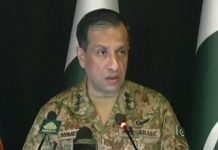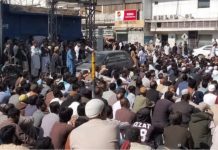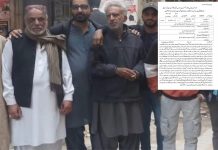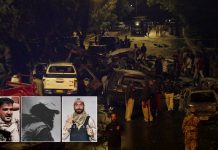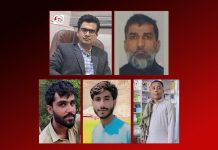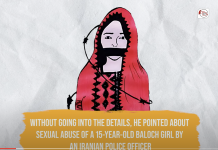Bahot Baloch
2022 was a year that unveiled various aspects of the Baloch independence movement. While significant successful operations by Baloch freedom fighters were witnessed, they also faced casualties. However, it cannot be ignored that the Baloch resistance struggle is now moving towards new possibilities.
In 2022, five major attacks were carried out by Baloch freedom fighters, out of which three attacks can be said to be the beginning of new chapters. These attacks have forced the Pakistani military and institutions to devise new strategies, the impacts of which will be felt and uncovered further in the near future. However, the million dollar question remains, whether the Baloch armed organisations are capable of maintaining this intensity? Are these organisations able to stand their ground in a fast changing world of international games and regional happenings?
A Glimpse At Severe & Deadly Attacks
In Karachi, the defacto economic backbone of Pakistan, a suicide bomber blew up a van belonging to Chinese Confucius Institute, killing three Chinese nationals. Baloch Liberation Army claimed responsibility for the attack.
The operation was carried out by Shari Baloch alias Bramsh. BLA’s spokesperson Jeeyand Baloch, in a media statement said that “Shari Baloch sacrificed herself, marking a new history in the Baloch resistance, and achieved the immortal status of becoming the first Baloch woman Fidai.”
Prior to the Karachi attack, on January 25, a main camp of the Pakistan Army was attacked by Balochistan Liberation Front fighters at Sibdaan in Tehsil Dasht of Kech District. The attack lasted for at least three hours, in which the Baloch freedom fighters successfully captured the camp while nine army personnel were killed in the attack. Most of the deceased personnel were from Pakistan’s Punjab province. BLF also lost one of its fighters in the attack.
Sibdan style attacks were previously carried out by the Baloch Liberation Army in Bolan and the umbrella organisation of Baloch armed groups BRAS in Kech and Makuran. It cannot be denied that BRAS has introduced a new methodology of military activities for Baloch armed groups, which has paved the way for deadly attacks.
In the recent past, BLA’s occupation of the Pakistani military camps from Nishpa area of Harnai in 2018 and the similar attacks in Jhalawan Tank, Kahan and Marwar in Bolan served to encourage Baloch militants in other parts of Balochistan to carry out similar attacks. Previously, such operations were very limited in number. One such example is an attack in 2011 in Margat under leadership of BLA’s slain chief Aslam Baloch, in which multiple outposts of Pakistani military were targeted and occupied. Pakistani military’s reinforcement team from Quetta was also attacked.
This year, the most severe and complex attacks were carried out in Nushki and Panjgur simultaneously, in which 16 members of BLA’s Majeed Brigade took part. This was the largest attack by Majeed Brigade to date. BLA spokesperson Jeeyand Baloch said that “the main objective of Operation Ganjal was to make it clear not only to Pakistan but also to the whole world that the Baloch movement is capable of carrying out high level attacks. Operation Ganjal was an expression of the extent to which Baloch youth are capable of going for their freedom.”
Keeping the same intensity, within a span of just two months, Shari Baloch, a member of BLA’s Majeed Brigade, targeted members of the Confucius Institute in Karachi. This attack not only achieved its goals but also started a new debate. The attack dealt a blow to Chinese interests in Balochistan. In response to which the Chinese authorities expressed their dissatisfaction with Pakistan and considered deploying their own military personnel to protect its citizens.
Baloch freedom fighters have introduced changes in their methodology, which includes selecting targets and carrying out operations through different units. This change was evident at the time of abduction of a serving Pakistani military officer Lt Col Laiq Baig from Ziarat. On the night of July 13 and 14 near Ziarat city of Balochistan, the senior officer of DHA Quetta, Lt. Col. Laiq Baig Mirza and his cousin Umar Javed were taken away by armed men after identification.
After the incident, the Pakistan Army launched a large-scale operation in the area, but they failed to recover the hostages, while the bodies of the two men were later found.
Jeeyand Baloch, spokesman of the Baloch Liberation Army, while giving a statement said that the BLA’s Special Tactical Operations Squad (STOS) conducted an operation near Ziarat on a special tip-off and arrested a serving senior officer of the Pakistan Army, Colonel Laiq Baig Mirza.
He further said that Lt. Col. Laiq Baig Mirza was a prime target of the Baloch Liberation Army and was being tracked by the intelligence unit of the BLA for the past several days. On July 12, the target was followed throughout the day and finally arrested in an area where the threat to the public was minimal.
Jayand Baloch said that “Colonel Laiq Baig confessed to all his crimes, for which he was sentenced to death by the “Baloch National Court”.
The following month in August, Baloch Raji Aajoi Sangar (BRAS), the coalition of Baloch armed organizations, claimed responsibility for shooting down a Pakistan Army helicopter in Lasbela district. All the six personnel of the Pakistan Army aboard the helicopter were killed on the spot. Among those killed were Corps Command 12 Corps Lieutenant General Sarfraz Ali, Director General Coast Guard Major General Amjad, Brigadier Khalid, Pilot Major Saeed, Assistant Pilot Major Talha and Naik Mudassar.
Another large operation was carried out by the Baloch Liberation Army on September 25 in Harnai, where two Pakistan Army personnel were abducted after identification. Shortly after a military helicopter engaged in rescue operation was also shot down by Baloch fighters. Six personnel including two Pakistan Army pilots were killed in the attack.
In the last days of 2022, at least 18 different types of attacks were carried out during just two days, the responsibility of which was mainly claimed by the Baloch Liberation Army. These attacks were carried out on the death anniversary of the slain chief of the Baloch Liberation Army, General Aslam Baloch. Among the attacks, the attacks of BLA Special Tactical Operations Squad (STOS)in Turbat and Kahan were prominent in which 9 personnel including a captain and a commissioned officer of the Pakistan Army were killed.
Gains from the change:
There is a clear change in the policy of the Baloch resistance organizations, in which there are other points to be considered along with serious attacks. While the Baloch armed organizations attracted the international media due to the attacks, they conveyed their message to the world in a clear manner through social media and other means.
The BBC reported that during the Nushki and Panjgur attacks, “while local people and officers were getting no information and communication was difficult, the BLA sent video, audio and press through its Telegram channel. It was constantly sharing information in the form of media releases. And it was observed that within no time this information started being shared on social media. Due to lack of information from official and authoritative media, BLA’s narrative on social media began to spread more.”
The BBC further wrote that “this information was being released by the BLA in three languages, English, Balochi and Urdu. In addition, the number, names and photographs of the attackers, as well as the full details of the so-called ‘Operation Gunjal’ were being shared.
A similar procedure was adopted by the BLA during the suicide attack in Karachi, where photos of Shari Baloch, her video and audio messages along with songs attributed to her were shared.
Videos of several attacks by Baloch armed organizations against the Pakistan Army were also published in 2022. Pakistan Army’s public relations department ISPR had failed to confirm any information regarding most of these attacks. The videos published by Baloch armed organizations have further damaged ISPR’s credibility.
Apart from this, the mentioned organizations are also paying attention to published literature. Baloch Liberation Army’s guide book “Cheeda” is noteworthy in this regard, while BLA also published two training books this year like the last year.
Furthermore, the Baloch armed organisations also showed the presence of their sub-units, in which, apart from the media, “intelligence units” and “elite forces” also took part in operations. These actions indicate that these “elite forces” may emerge further in the near future.
Losses to the Baloch armed groups
In 2022, the news of Baloch Nationalist Army chief Gulzar Imam alias Shambe’s detention and transfer to Pakistan was prominent for Baloch armed organizations. Although there are many cases of such arrests of active members of different movements on the international scene, but this is the first incident of its kind for the Baloch movement.
However, security analysts and people with knowledge of Baloch armed organizations believe the arrest of Gulzar Imam will not have any major impact on the Baloch armed movement.
Abdul Basit, a researcher associated with the S. Rajaratnam School of International Studies, a security think tank based in Singapore, says that the killing or capture of key commanders does not matter much to Baloch armed organizations.
Talking to Voice of America, he said that the arrest of Gulzar Imam has dealt a blow to the BNA network in Balochistan. But overall, this will not cause any major damage to the Baloch separatist movement. Citing the example of the killing of Aslam Baloch, the mastermind of the attack on the Chinese consulate in Karachi in 2018, he said that the BLA became more organized under the leadership of Aslam Baloch’s successor, Bashir Zeb.
Before Gulzar Imam’s arrest, at least 35 fighters of his organization were killed during operations in different areas, in which the use of drone attacks by the Pakistan Army is noteworthy. Apart from drone attacks on BNA, drone attacks were also carried out against on other Baloch armed groups, in which they suffered casualties.
Conclusion
Attacks on forces camps and headquarters by Baloch armed organizations, shooting down helicopters, detaining senior military officers and the involvement of female attackers indicate the escalation of the war in Balochistan. The situation is likely to change further. The Pakistani military is carrying out drone attacks to large-scale military operations and sharing technology with Chinese authorities to subdue Baloch militants. This shows that Balochistan does not have a low-level insurgency but a full-fledged war has broken.
In recent months Baloch fighters expressed willingness for prisoner-swap in exchange for the detained personnel of the Pakistan Army. It was the first time that a Baloch armed group had expressed willingness to negotiate at a point less than the “complete withdrawal of forces”, however, Pakistani military preferred use of military might.
Both sides in Balochistan’s war are of the opinion that the end can be achieved only through the most extreme means, but this will only lead to more bloodshed in Balochistan, perhaps its tremors will also be felt in Islambad.












